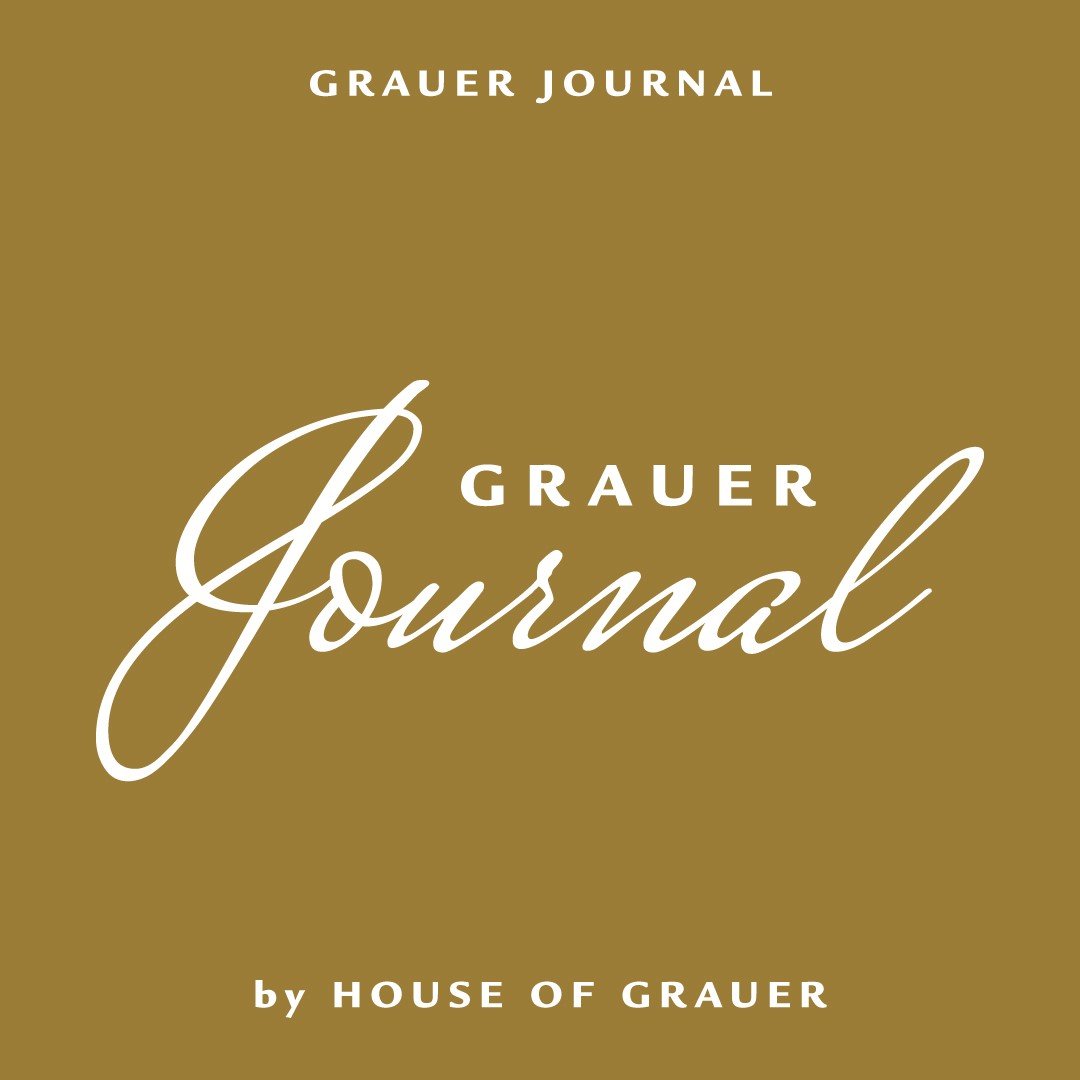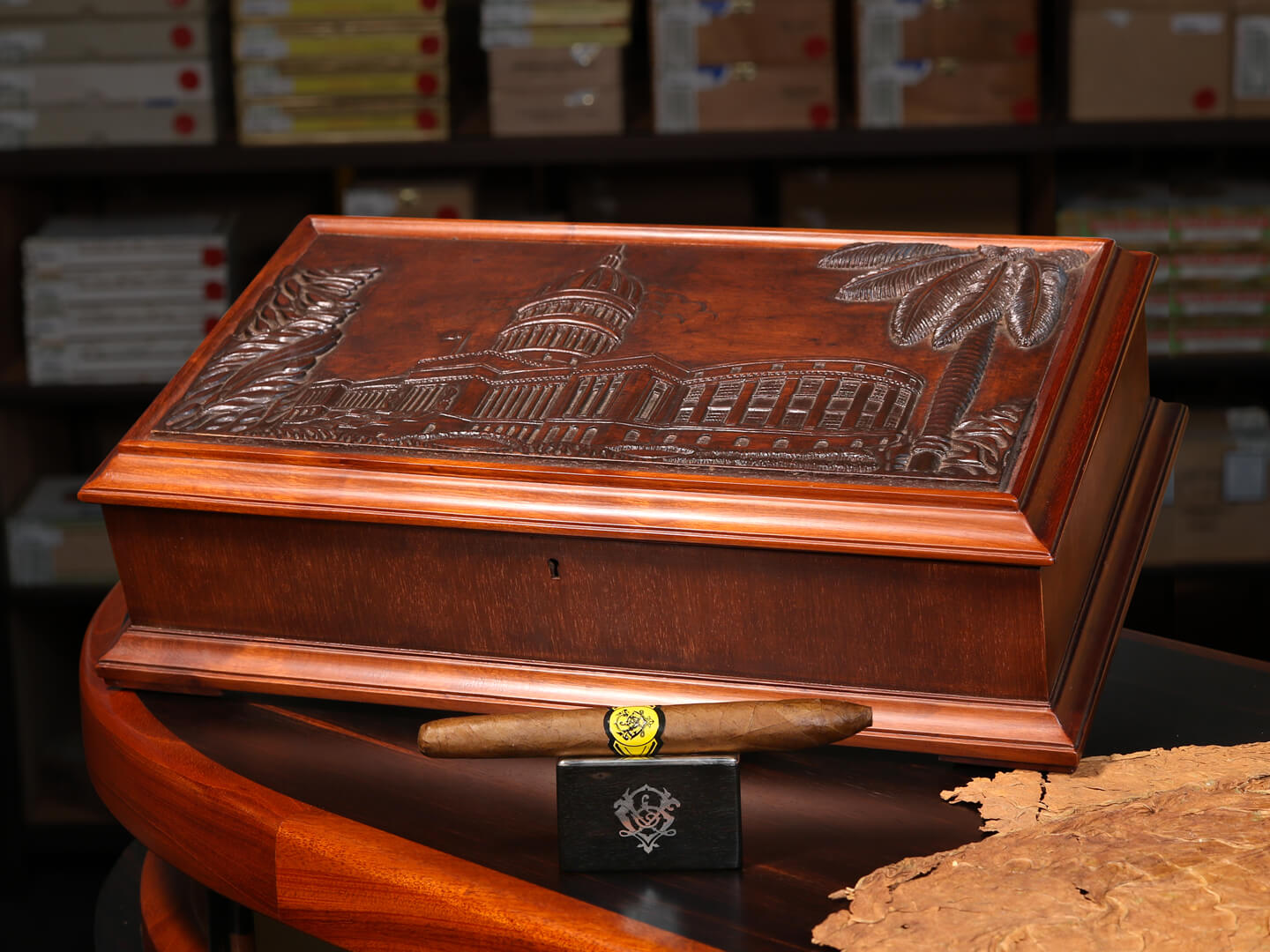Cohiba Diplomats
A humidor "Hecho en Cuba".
A true collector's item, this humidor was manufactured in the 1960s by Arte Negro under the supervision of Rene Puig Tamargo. The latter, then appointed head of production, was director of Emprova, a factory that manufactured humidors, but also furniture for the State Council of the Cuban Republic. Entirely carved by hand in solid mahogany, the humidor was conceived by a group of designers with Maria Victoria Cainet. The singular pattern of each tree and the hand of the sculptor make each humidor a unique piece.
Stamped Cubatabaco that in 1994 became Habanos S.A., this humidor is part of a collection with different models, each illustrating a different landscape. Each model was at the time available in varnished mahogany, like the one presented today, or painted in white with gray and yellow tones. When it came out, this humidor did not have a name. Staring from 1964 Fidel Castro began to offer these humidors to foreign dignitaries. Celia Sánchez Manduley, Cuban revolutionary politician close to Fidel Castro, decided to baptize it then "Cohiba" (a word used by the Tainos Indians to designate tobacco). Later, the name "Cohiba Diplomats" was taken up in 2003 by Min Ron Nee in his book: "An Illustrated Encyclopedia of Post-Revolution Havana Cigars".
A few years after having been a diplomatic gift, the Cohiba Diplomats, proudly displaying the national symbol of the time, pursued a different path. Indeed, in 1966 at the Pan American Chess Championship held in Havana, the humidor was used to hold chess pieces.
Today there exists no document attesting the exact number of Cohiba Diplomats produced. However, according to rumours, there were 200 units manufactured from 1960 to 1980. Still not all of them might have been distributed at that time. The state council is supposed to have preserved some humidors to offer them. In addition to that, some Cuban personalities also received them as gifts, that’s why it is possible to find them in Cuba in some private collections, although this is very rare.
Moreover, besides these sumptuous carved humidors, the Arte Negro factory, is at the origin of two very important cases, the "Bohio" (the house of the Cuban agricultural workers) and the "Casa Trinidad" resembling to picturesque houses from the city of Trinidad. These two pieces also remain quite mysterious and have marked the history of Cuban craftsmanship.
COHIBA DIPLOMATS - Original piece from the 1960s
Capacity: from 50 to 100 vitolas
Dimension: L46 cm x H13 cm x P28 cm
Login to your online account to reserve your item
or contact us at +41 22 552 2799


